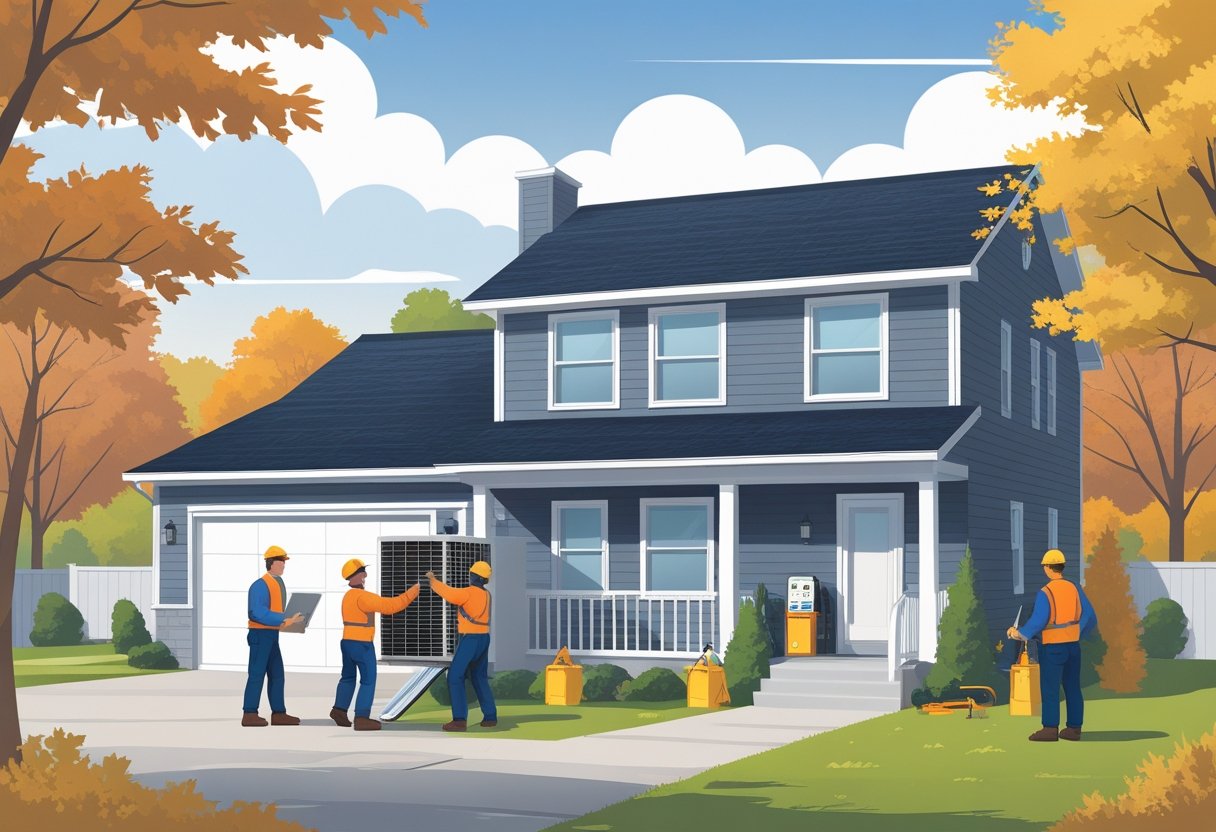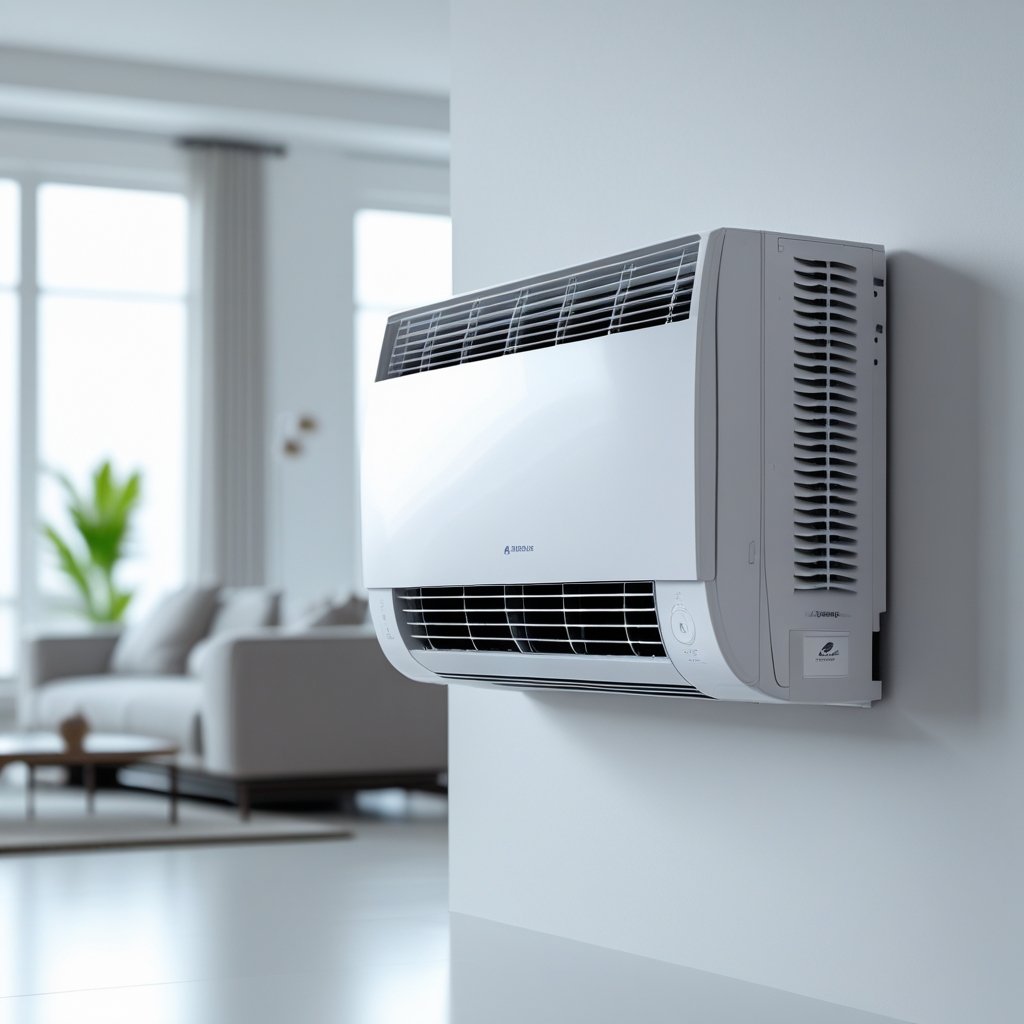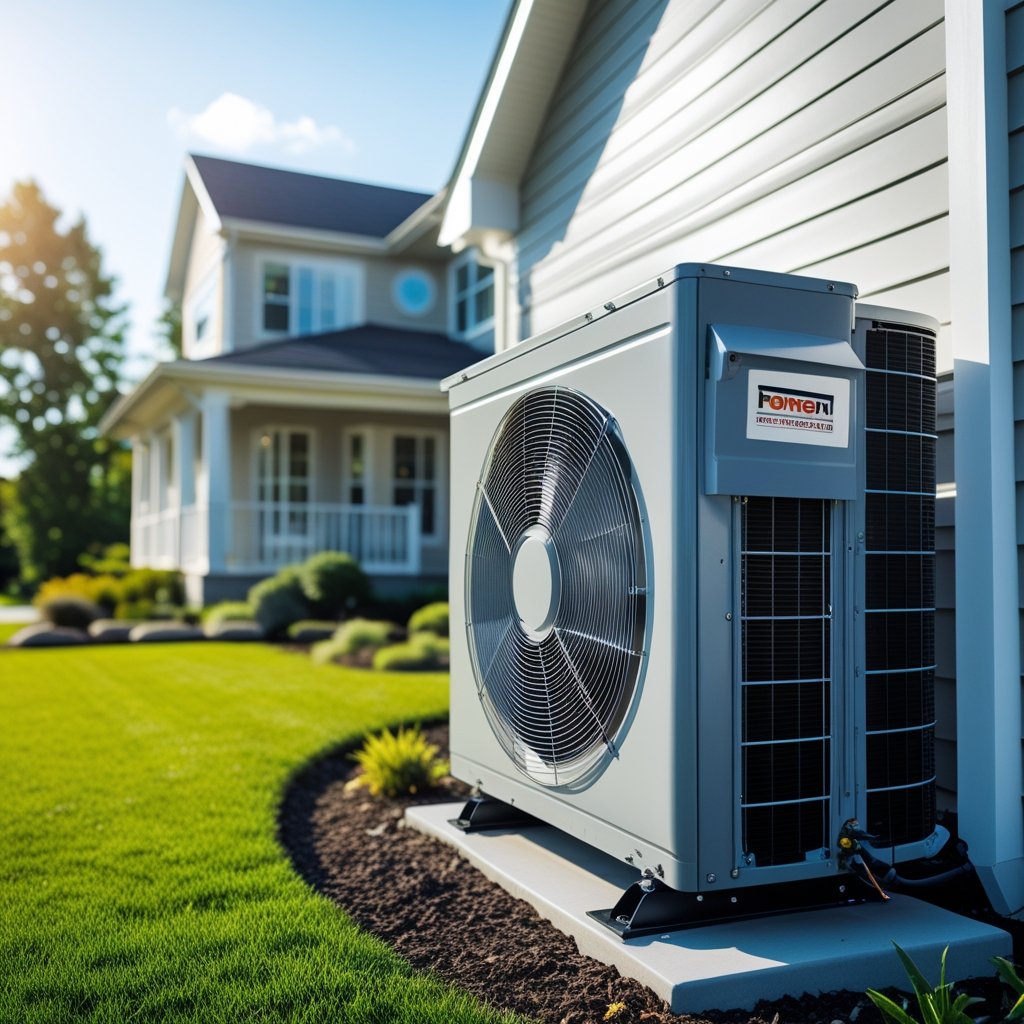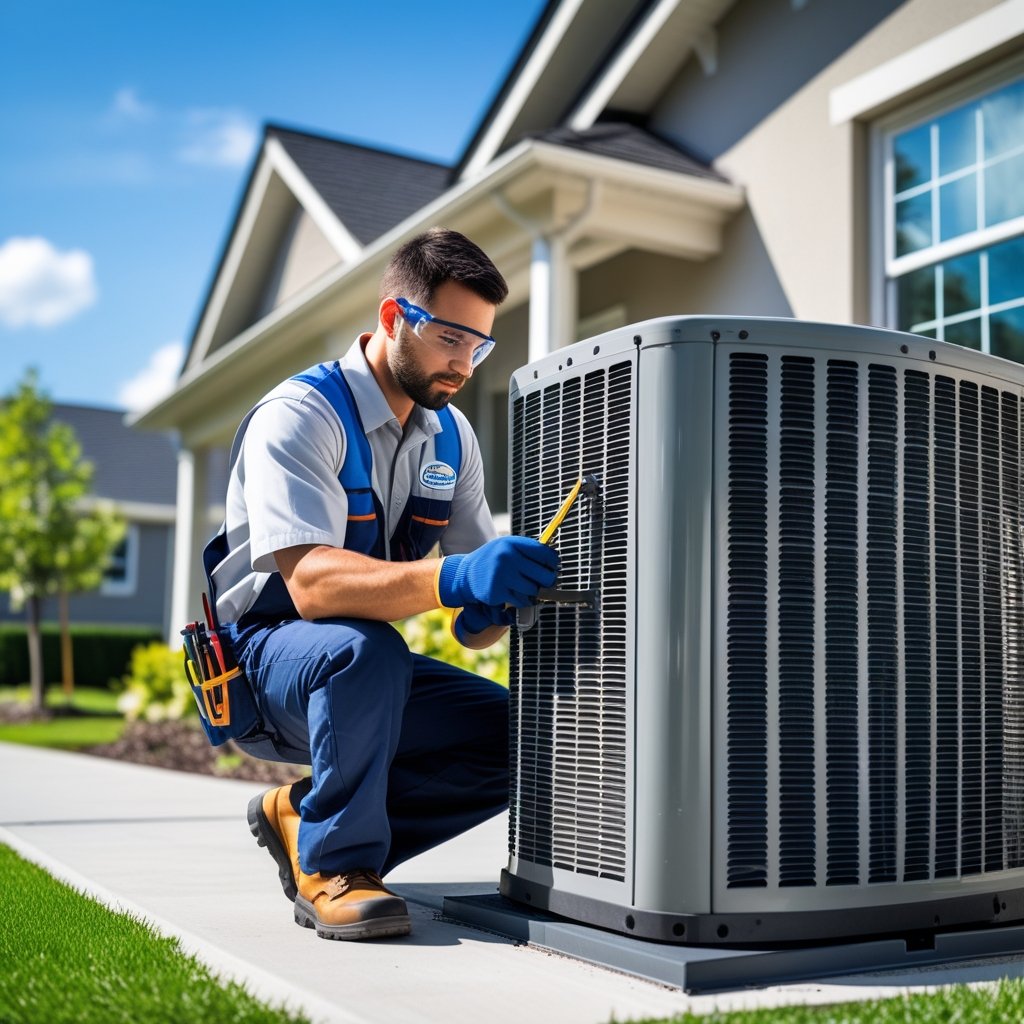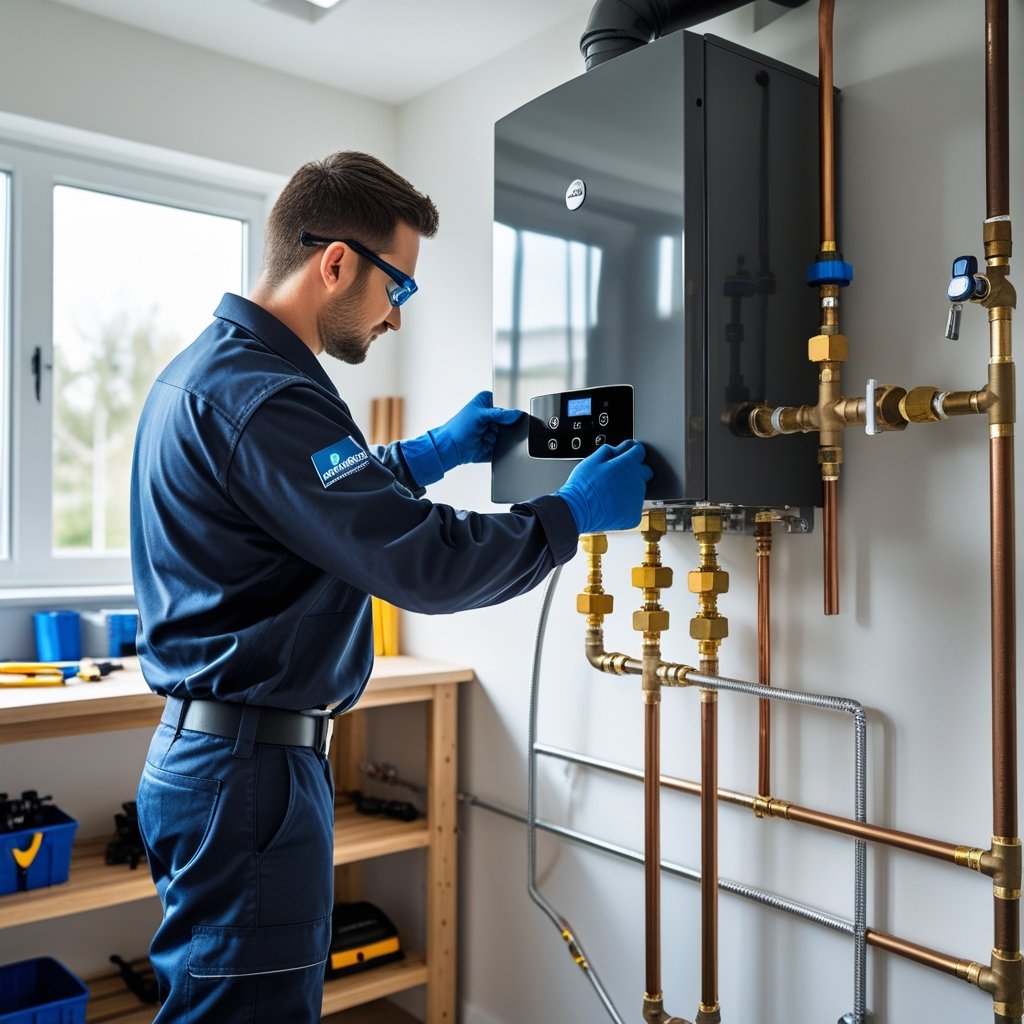When you’re staring down the need for a new HVAC system in Pennsylvania, it helps to have a ballpark figure before you dive in. Most HVAC replacements in South Central PA run between $5,000 and $12,000, but the exact number depends on your home’s size, your system choice, and how tricky the installation is. That range covers everything from heat pumps and oil furnaces to mini-split systems, so there’s something out there for every budget.
The system you pick isn’t just about the sticker price—it can change your energy bills for years. A good installation by pros like Leo Kob Co. means you’ll probably enjoy steadier comfort and maybe even lower utility costs. If you’re in Lancaster, Harrisburg, or York, it’s worth knowing what pushes these prices up and how to dodge unexpected charges.
You don’t always need a full replacement to keep your HVAC humming. Regular tune-ups or a maintenance plan can squeeze a few more years out of your current system and help you sidestep expensive repairs. Leo Kob Co. likes to give it to you straight—no pressure, just advice for what fits your home best.
Understanding HVAC Replacement Cost in Pennsylvania
So, what really drives HVAC replacement costs in Pennsylvania? Honestly, it’s a mix: system type, installation complexity, and local stuff like climate and labor. Get a handle on these, and you’ll feel a lot more in control of your budget.
Typical Price Ranges
In Pennsylvania, swapping out an HVAC system usually lands between $4,000 and $12,000. That’s a big spread, but it comes down to your home’s size and what level of efficiency you want. A small house with a basic central air system? You might squeak by at $4,000. A big place with a high-efficiency setup? You’re looking at the upper end.
Labor isn’t cheap—expect $1,000 to $3,000 just for installation. That covers hauling out the old stuff, putting in the new, and making sure it all works. Leo Kob Co. keeps pricing transparent, so you’re not left guessing.
Cost Comparison by System Type
Here’s a quick peek at what different systems might run you:
- Central Air Conditioner: $3,500 to $7,500
- Heat Pump: $5,000 to $10,000
- Furnace (Gas or Oil): $4,000 to $9,000
- Mini-Split Systems: $4,000 to $8,000 per zone
Heat pumps cost more upfront but can heat and cool, saving you down the road. Mini-splits are perfect for zone control or homes without ducts. Furnaces? It depends on fuel type and efficiency. Your pick shapes both your initial bill and future savings.
Pennsylvania-Specific Pricing Factors
Where you live in Pennsylvania matters. Local labor rates, weather, and state energy incentives all play a part. South Central PA winters can be brutal, so a high-efficiency furnace might be worth the investment. Some areas, like Lancaster or Harrisburg, see higher demand, which can nudge prices up.
Old homes might need ductwork or electrical upgrades, which adds to the cost. On the bright side, there are rebates for energy-efficient systems in Pennsylvania, which can knock down your bill. Leo Kob Co. can help you chase those savings and still get solid service.
Major Factors Influencing HVAC Replacement
A handful of things really move the needle on what you’ll pay for a new HVAC system in Pennsylvania. Your home’s size, any ductwork changes, the brand and model you choose, and how energy-efficient you want to go—all these shape the final number.
Home Size and Layout
Bigger homes need bigger (or more) systems, and that means more money. If your place has a funky layout, lots of rooms, or multiple floors, the HVAC setup might get complicated. More zones or equipment often equals more cost.
Open floor plans sometimes let you get by with a smaller system since air moves more freely. But if your home is a maze of rooms, you might need extras like multiple thermostats or zoning controls. South Central PA homes are all over the map, so it’s worth having Leo Kob Co. take a look and size things up before you commit.
Ductwork Modifications
Your ductwork can be a hidden money pit. Old, leaky, or badly designed ducts might need repairs or total replacement, which can get expensive fast.
Switching system types? You might need new duct sizes or layouts. And if your home never had ducts (which happens in older PA homes), you might want to look into ductless mini-split systems, which changes the installation equation.
If Leo Kob Co. spots duct issues, they’ll break down what needs fixing and what it’ll cost. Good ducts make your system more comfortable and cut down on future headaches.
Equipment Brands and Models
Not all HVAC brands and models are created equal. Big-name brands often charge more for their reputation, warranties, and easy-to-find parts. But you don’t always need the flashiest name to get a system that works and lasts.
Compare models based on your needs, budget, and Pennsylvania’s wild weather. Some models come with cool features like smart thermostats or extra-quiet operation, but those can push up the price. Leo Kob Co. can help you sort through your options and find something reliable that doesn’t break the bank. Don’t forget to ask about warranties and what’s included with installation.
Energy Efficiency Ratings
Energy efficiency is a big deal for HVAC costs. Systems with higher SEER ratings use less power, so your bills drop. In Pennsylvania, picking a high-efficiency model might even get you some rebate money.
Efficient systems cost more upfront—sometimes 10-20% more—but they can pay you back over time. If you’re planning to stay in your home for a while, it’s probably worth it. Plus, efficient units usually keep your house more comfortable. Leo Kob Co. keeps an eye out for rebates and energy-saving options to help you get the most bang for your buck.
Labor and Installation Charges
Labor and installation charges eat up a big chunk of your HVAC replacement budget. Who you hire, local rules, and your Pennsylvania zip code all shape what you’ll pay.
Licensed Contractor Rates
A licensed contractor is a must for safe, solid HVAC work. In PA, skilled HVAC labor runs $75 to $125 an hour. Some companies, like Leo Kob Co., might quote a flat installation rate—anywhere from $1,000 to $3,000, depending on how tricky the job is.
Paying for a licensed pro means you get a warranty on the work, which is worth a lot. Always check if the price covers startup, testing, and cleanup. Those details can save you some nasty surprises.
Permitting and Inspection Fees
Most counties in Pennsylvania want permits for HVAC swaps. Permits usually cost $50 to $300, depending on where you live. After the job, an inspector might drop by to make sure everything’s up to code.
Skip the permit, and you could run into trouble with insurance or selling your home later. Make sure your contractor, like Leo Kob Co., handles all the paperwork—less hassle for you.
Geographic Variations Across Pennsylvania
Labor rates swing a lot across the state. Philly and Pittsburgh? Expect higher installation fees thanks to demand and higher living costs. Smaller towns or rural spots usually mean lower labor rates, but sometimes travel charges sneak in.
Climate matters too. Northern PA, with its harsh winters, might see higher prices for heat pump installs because of special equipment and insulation needs. Knowing your local scene helps you budget smarter.
Heating and Cooling System Options
Picking the right heating and cooling system changes your comfort, your bills, and your stress level. There are several types—each with its own price, efficiency, and maintenance quirks. Honestly, what works best depends on your home and the local climate.
Central Air Conditioning
Central air cools your whole house through ducts, usually working alongside your furnace or a heat pump. It keeps things comfy and, with good filters, can help your air quality too.
Installation cost depends on your home’s size and ductwork. If your ducts need help (or don’t exist), expect the bill to climb. The upside? Central air units often qualify for energy rebates in PA, which is a nice break.
Keep up with filter changes and get annual checkups from someone like Leo Kob Co., and your system should treat you well.
Heat Pumps
Heat pumps handle both heating and cooling by moving heat in or out of your house. They’re great for moderate climates, but newer models can handle Pennsylvania winters just fine.
They’re energy-efficient and can cut your utility bills. Install costs vary but are often in the same ballpark as furnaces and central air combined.
Maintenance is pretty simple, and you might snag rebates to help with the upfront price. If you want one system for all seasons, heat pumps are worth a look.
Furnaces
Furnaces burn fuel—usually natural gas in PA—to heat your home. They’re reliable and can deal with our cold winters.
You can pick gas, electric, or oil, each with its own pros, cons, and price tags. Gas is popular thanks to lower running costs.
Install cost depends on your current setup and fuel source. Yearly service is a must to keep things safe and efficient. A good contractor in South Central PA will make sure your furnace is up to code and humming along.
Ductless Mini-Splits
Ductless mini-splits are a lifesaver for homes without ducts. These compact units heat and cool individual rooms or zones, making them perfect for older homes or additions.
They’re less invasive to install, which can save you money. Plus, you only heat or cool the rooms you’re using, so you save on energy.
Mini-splits are efficient and quiet, and they often qualify for local rebates. Just remember to clean the filters and get the occasional pro checkup to keep them running right.
If you’re not sure what fits your place, call Leo Kob Co. for honest, no-pressure advice.
Seasonal and Regional Considerations
Thinking about HVAC replacement costs in Pennsylvania? Your timing and location can make a real difference. Weather swings and whether you’re in a city or out in the sticks both play into what you’ll pay and what system makes sense.
Weather Impacts on Replacement Cost
Pennsylvania gets just about every kind of weather—icy winters, muggy summers. Your HVAC system works hard all year. If you try to replace it right before winter or summer, you might pay more because everyone else is rushing to do the same.
Harsh cold means you’ll need a strong heating system, while steamy summers call for efficient cooling. Some folks want a system that can tackle both. Equipment built for PA’s climate might cost more upfront, but it’ll probably save you money (and headaches) over the years.
Keeping up with maintenance from a company like Leo Kob Co. can help your system last longer, even when the weather’s rough.
Urban vs Rural Price Differences
Living in Harrisburg or Lancaster? Expect to pay more for replacement than if you’re out in the country. Urban homes sometimes need trickier systems to fit tight spaces or older buildings, and labor costs are usually higher.
In rural areas, installs might be simpler, but travel fees for techs can creep in. Plus, bigger properties might need more powerful systems.
Either way, getting a clear estimate from a local pro like Leo Kob Co. means fewer surprises down the road.
Rebates, Tax Credits, and Financing
You don’t have to pay full price for HVAC replacement in Pennsylvania. There are plenty of rebates, tax credits, and financing options to help cut the upfront cost. It’s worth poking around to see what’s out there—you might be surprised how much you can save.
Available Utility Incentives
Plenty of Pennsylvania utilities hand out rebates if you install energy-efficient HVAC systems. They’ll reward stuff like high-efficiency heat pumps, ACs, or even smart thermostats.
You might see perks like:
- Cash rebates for ENERGY STAR® certified equipment
- Discounts on upgrades that save energy
- Free or lower-cost home energy checkups
Definitely check with your electric or gas company if you’re in South Central Pennsylvania—Lancaster, Harrisburg, wherever. These incentives can cut your replacement costs and help you save on bills. Leo Kob Co. can walk you through the utility programs when you set up your installation.
Federal and State Tax Programs
Through 2032, there’s a federal tax credit of 30% for energy-efficient HVAC equipment, with a $3,200 yearly cap. That covers things like mini-splits or heat pumps—if they meet the right efficiency standards.
Pennsylvania sometimes offers state incentives too, but they’re a bit unpredictable. Tax credits like these can lower your federal income tax if you upgrade your HVAC.
Hang on to your receipts for purchases and installation. Your tax pro—or someone at Leo Kob Co.—can help you figure out what qualifies and how to claim those credits on your return. It’s worth asking, even if the rules seem a little confusing.
Flexible Financing Options
Replacing HVAC isn’t cheap. Most folks look for financing plans so they can pay over time—and sometimes snag low or zero interest.
You’ll see stuff like:
- 0% APR for a set period, especially on efficient systems
- Monthly payments that actually fit your budget
- Financing that works with utility rebates for extra savings
Leo Kob Co. can go over financing programs and help you pick something that makes sense. This way, you can get your new system without sweating the payments. Just, you know, read the fine print before you sign anything.
Cost-Saving Tips for Homeowners
Want to save money on HVAC replacement in Pennsylvania? It’s all about making smart moves before and after you install. Pick the right contractor, time your replacement, and plan for maintenance. All this helps protect your wallet and keeps energy bills from creeping up.
Choosing the Right HVAC Contractor
Choosing a good HVAC contractor really matters. Find someone with clear pricing—no weird hidden fees. Ask if they know South Central PA and if they offer warranties or maintenance plans.
A decent contractor should lay out your options and help you find energy-efficient systems that qualify for tax credits, like that 30% federal credit (up to $3,200). That’s real money off the top.
You want a crew with a reputation for honest work and fair prices, not someone trying to upsell you on stuff you don’t need. Leo Kob Co. has been around since 1904, and they don’t do high-pressure sales. Always check reviews—see if the techs are actually friendly and show up when they say they will.
Scheduling Off-Season Replacements
If you can, replace your HVAC system during the slow times—late fall, early spring. Contractors usually have better deals when they’re not slammed. Scheduling ahead means you’re not scrambling in a heat wave or deep freeze.
Planning early gives you more time to check out rebates and tax credits. You can budget without the stress, and installers aren’t rushed, so they’ll probably do better work.
If your system’s old but still running, maybe get it inspected early in the year. That way, you can catch issues before they turn into emergencies. Replacing during the off-season is just less of a hassle.
Long-Term Maintenance Planning
Regular maintenance keeps your HVAC running smooth and helps it last. A service plan is almost always cheaper than emergency fixes or early replacement. Yearly tune-ups usually cover cleaning, filter swaps, and system checks.
Look for plans with priority scheduling, discounts on repairs, and warranty coverage. Most contractors suggest maintenance twice a year—spring and fall—so your system’s ready for whatever weather’s coming.
Staying on top of maintenance can drop your energy bills and prevent breakdowns. It’s really just peace of mind. If you want your investment to last, this is the way to go.
Signs It’s Time for HVAC Replacement
If your HVAC is over 10-15 years old, it’s probably time to start thinking about a replacement. Old units work harder and burn more energy, which drives up your bills.
You might notice your house isn’t heating or cooling evenly anymore. That’s a red flag. If you’re calling for repairs all the time, replacement starts to make more sense.
Keep an ear out for weird noises or funky smells from the system. Those usually mean worn-out parts or bigger issues. If your unit can’t keep up during the hottest or coldest days, it’s probably on its last legs.
If your energy bills keep climbing and you haven’t changed how much you use the system, that’s a warning too. Newer models are way more efficient and can even get you rebates.
Leo Kob Co. can help you figure out if repair or replacement makes more sense. They aim for quality service at a fair price and want your home to stay comfortable, period.
Here’s what to look out for:
- System is 10-15+ years old
- Uneven heating/cooling
- Lots of repairs, especially pricey ones
- Odd noises or smells
- Utility bills that keep going up
Not sure about your system? Give us a call. We cover South Central PA and actually care about doing the job right.
Frequently Asked Questions
HVAC replacement costs in Pennsylvania bounce around depending on your home’s size, the system you pick, and what the installation involves. Prices shift if you need new ductwork or a different type of equipment.
What's the average cost to replace a residential HVAC system in Pennsylvania?
Most folks pay between $5,000 and $12,000. It depends on brand, efficiency, and size. Basic swaps are cheaper, high-efficiency setups cost more.
How much does it cost to install a new HVAC system for a 2,000 sq ft home?
For a 2,000 sq ft place, you’re probably looking at $8,000 to $15,000. Bigger space means bigger equipment and sometimes trickier installs.
Can you estimate the HVAC replacement cost for a 1,000 sq ft house?
For a 1,000 sq ft house, it’s usually $4,000 to $7,000. Less space, less equipment, less labor.
What are the expected costs for installing a new HVAC system for a 1,500 sq ft property?
Typically, a new system for a 1,500 sq ft property runs $6,000 to $10,000. System type and efficiency make a difference.
Where can I find a furnace and AC replacement cost calculator?
There are online calculators on home energy and service sites. Or just ask Leo Kob Co.—they’ll give you a detailed estimate based on your home.
What factors influence the cost to install HVAC system with ductwork?
If you need new ductwork or repairs, expect costs to climb. System efficiency, the brand you pick, labor rates in your area, and permits can all nudge the price up too. And honestly, older homes? They tend to throw a few curveballs when it comes to ductwork.

